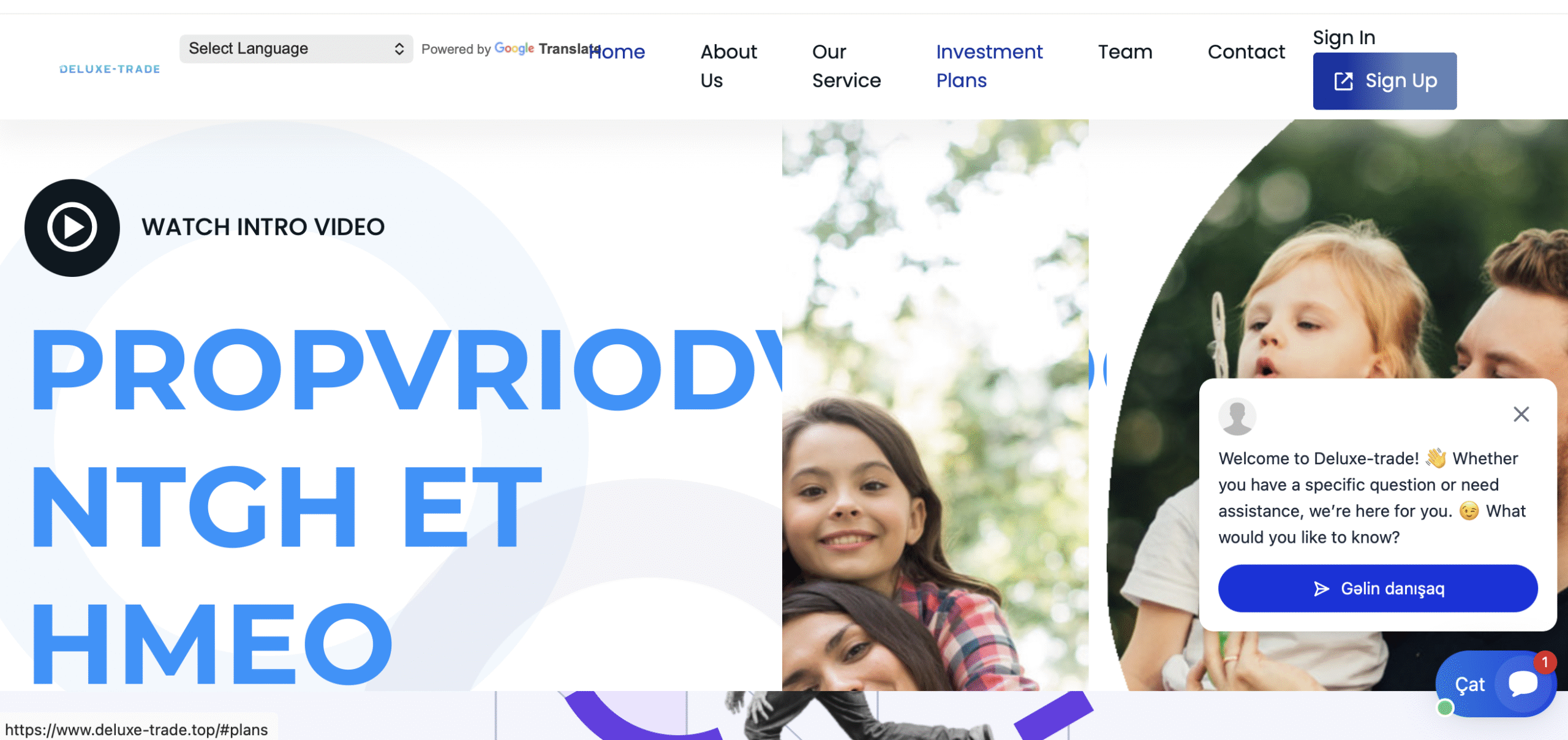Deluxe-Trade has been making the rounds online with bold promises of high returns, low risk, and fast withdrawals. On the surface, it presents itself as a modern trading platform with sleek branding and a user-friendly interface. But a closer look reveals a pattern of red flags commonly associated with scam broker operations. This in-depth review breaks down how platforms like Deluxe-Trade operate, the warning signs to watch for, and why this website should be avoided if you value your money and your peace of mind.
What Deluxe-Trade Claims vs. What Users Report
Scam platforms often rely on persuasive marketing to draw people in. They advertise guaranteed profits, VIP accounts, and personal “account managers” who promise to help you succeed. Deluxe-Trade fits this mold, portraying itself as a professional trading environment with tools for forex, crypto, and commodities. However, many users report a very different experience:- Initial deposits are encouraged with bonuses and limited-time offers.
- “Account managers” pressure people to add more funds, citing “can’t-miss opportunities.”
- Withdrawals are delayed, restricted, or blocked—often with sudden requirements like extra verification or “release fees.”
- Communication becomes inconsistent once larger amounts are deposited.
Key Red Flags That Signal a Scam
When evaluating any online broker or trading site, these warning signs matter. Deluxe-Trade displays multiple red flags:- Anonymous ownership: Trustworthy companies provide clear details about their legal entity, leadership, and physical address. Scam sites typically hide this or list unverifiable information.
- Aggressive deposit tactics: High-pressure sales tactics, constant calls, and “limited-time” deposit bonuses aim to push users into sending more money quickly.
- Withdrawal obstacles: Hidden clauses, unexplained “taxes,” “verification fees,” or “anti-money laundering holds” appear only when you try to withdraw funds.
- Unrealistic returns: Claims of “guaranteed” daily profits or win rates are mathematically impossible in real markets.
- Poor transparency: Vague terms and conditions, unclear fee structures, and shifting rules are used to control user funds.
- Unprofessional digital footprint: Newly created domains, recycled website templates, stock photos, and fake testimonials are hallmarks of boiler-room operations.
How the Scam Funnel Typically Works
Understanding the playbook helps you spot the danger earlier:- Attraction: Targeted ads, social media content, and fake influencer posts promise easy profits and “automated trading.”
- Onboarding: Low minimum deposits encourage quick sign-ups. You’ll often be assigned an “account manager.”
- Early wins: The platform interface may show early “profits” to build trust, but these numbers are often fabricated or simulated.
- Upsell: You’re urged to deposit more to unlock higher tiers, better tools, or time-sensitive trades.
- Withdrawal block: Once you try to cash out, new conditions appear—extra documentation, fees, or trade volume requirements.
- Stonewalling: Communication slows, support becomes scripted, and your account may be suspended or “under review.”
Why Regulation and Transparency Matter
Regulation is not a mere formality—it’s your primary protection. Licensed brokers must segregate client funds, follow strict reporting standards, and give access to dispute resolution mechanisms. Transparent firms also provide:- Clear company registration details
- Named executives and staff with real professional histories
- Public terms of service with plain-language explanations
- Robust, responsive customer support channels
The Psychology Behind the Pitch
Scam platforms rely on emotional triggers:- Scarcity: “Offer ends in 2 hours!” pushes rushed decisions.
- Authority: Posing as experts or citing fabricated credentials builds false credibility.
- Social proof: Fake reviews and testimonials create a sense of momentum.
- Reciprocity: “Bonuses” or “free signals” make you feel indebted or excited to participate.
Common Tactics Used to Block Withdrawals
One of the clearest indicators of a scam platform is the withdrawal phase. The following tactics are classic:- “Bonus” traps: Hidden terms require impossible trade volumes before you can withdraw.
- Surprise fees: Requests for tax payments, liquidity fees, or “unlock charges” that legit brokers never demand.
- KYC loop: Endless document requests and rejections without clear reasons.
- Account freezes: Sudden flags for “suspicious activity” with no timeline for resolution.
What Real Trading Platforms Offer (That Scams Don’t)
To help distinguish credible services from scams, look for:- Verified licenses with reputable regulators you can independently confirm
- Transparent fee schedules and swap/commission disclosures
- Negative balance protection and clear margin policies
- Well-documented APIs, platform uptime data, and clear support SLAs
- Realistic risk warnings and balanced marketing language
Usability and Accessibility Concerns
Beyond financial risk, many scam platforms neglect usability and accessibility:- Poorly implemented dashboards with inconsistent data
- Inaccessible designs with low contrast, missing alt text, and non-descriptive form labels
- Limited language options or support availability
- Non-inclusive communication that ignores diverse user needs
How to Evaluate Any Broker in 5 Steps
Use this quick, inclusive checklist before engaging with any trading site:- Verify the license: Check the regulator’s public register directly using the company’s legal name, not just a brand name.
- Confirm the entity: Look up the registered business number, directors, and physical address. See if they match across official sources.
- Test withdrawals: Start with the smallest possible deposit, execute a few basic trades, and attempt a withdrawal early.
- Read terms end-to-end: Search for “bonus,” “withdrawal,” “fees,” and “liability” to spot traps.
- Audit the footprint: Assess domain age, leadership transparency, real user reviews on neutral platforms, and consistent communications.
Patterns That Suggest a Boiler-Room Operation
Deluxe-Trade aligns with patterns often found in boiler-room operations:- Recycled web components and generic copy found on multiple “clone” sites
- Live chat agents who avoid direct questions about regulation or licensing
- Phone and messaging outreach that escalates when you hesitate to deposit
- Frequent rebranding or domain hopping to escape negative reviews
Inclusive Trading Education: What Safe Learning Looks Like
Everyone deserves fair access to trustworthy financial education and tools. Inclusive, user-centered learning environments provide:- Clear, jargon-free explanations
- Realistic discussions about risks and volatility
- Demo accounts that do not require deposits or aggressive upselling
- Respectful, non-pressuring support that honors your pace and choices

